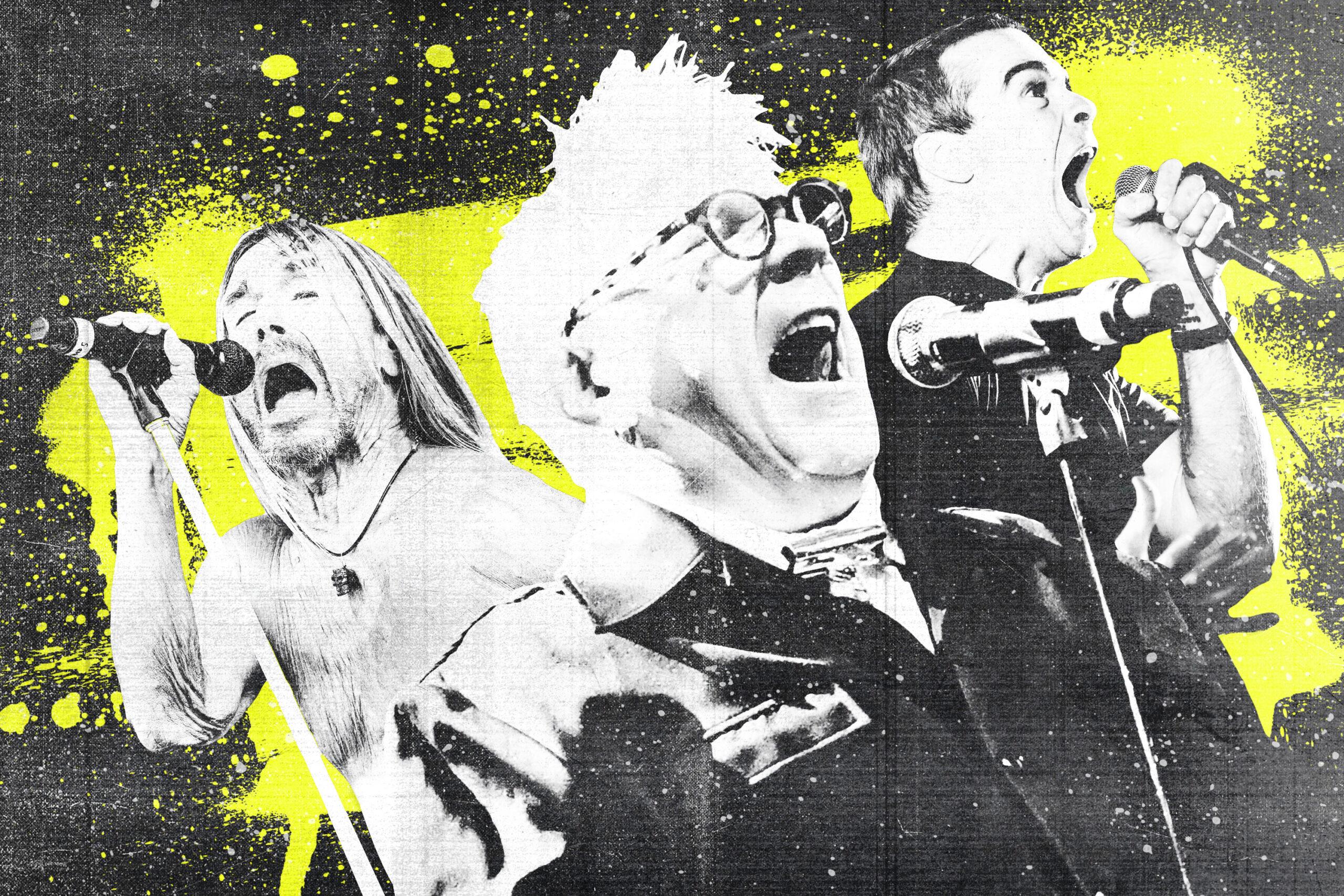
Last week, at an all-star panel convened to celebrate the new four-part Epix documentary Punk, Johnny Rotten and Marky Ramone nearly threw withered hands during an unseemly shouting match that was, naturally, far more effective a punk gesture than any four-part documentary. Specifically, Johnny, who’d warmed up by sassing fellow panelist and punk heavyweight Henry Rollins, dismissed Marky as “not an original Ramone” (true), whereupon Marky accused Johnny and the rest of the Sex Pistols of ripping off Richard Hell’s style (basically true), adding that Sid Vicious was the Pistols’ true star (sure). “That’s right, he was,” Johnny retorted. “He was the star for asshole fake idiots like you. Enjoy your drugs and fuckin’ have a happy death.” (All of that is harder to rate on a true/false scale.)
By one perspective, this was a thrilling fracas between two rock gods whose electrifying misanthropy is undiminished by time; by another perspective, it was two old men, in the absence of clouds, yelling at each other. Johnny Rotten is [Googles; winces] 63 years old. Marky Ramone is 66. All four original Ramones are dead. It is not nice to dwell on these facts. But you know what else wasn’t nice? Huh? Do ya?
Of course, that semi-disastrous panel made for fantastic semi-guerilla marketing for Punk, the four-week event whose first episode premieres on Epix Monday night. The series is executive produced by the great Iggy Pop and the terminally suss John Varvatos, a.k.a. the clothing designer who turned NYC punk temple CBGB into a high-end boutique. (Snag an appliqué CBGB T-shirt for the low, low price of $98.) There’s your dramatic tension, then.
Iggy is a lovely man to spend time with regardless of the circumstances. He is regal and still carnal at 71, his bare chest leatherier than his actual leather jacket. He has aged gracefully within a genre devoted to the romantic ideal of dying young, and like many of Punk’s early talking heads—including Rollins, Rotten, Marky Ramone, Jello Biafra, former Circle Jerks/Black Flag frontman Keith Morris, and multiple members of Blondie—he is filmed walking to the interview couch in slow motion, to emphasize his coolness and this project’s reverence. Whether or not that reverence is itself cool is a thornier issue.
Directed by Jesse James Miller, Punk kicks off in Detroit, tracing the late-’60s origins of the mighty MC5: We watch as Sylvain plays air guitar, Rollins bashes air drums, and Morris joyfully lip-syncs to “Kick Out the Jams,” awestruck kids again in spirit, at least. The MC5, in turn, inspired a smiley, teenaged blues-rock drummer named Jim Osterberg to eventually rechristen himself Iggy Pop and rededicate himself to the Stooges, an elegantly troglodytic rock band designed to “bring the blues to suburban juvenile delinquency,” as he puts it. “I stopped singing about little mice and rainbows, and I started singing about having nothin’ to do, and no fun, and, you know, animal sex and whatever.”
From there we jump to the well-trod post-apocalyptic wasteland of ’70s NYC, where the New York Dolls fomented a rock ‘n’ roll revolution by stealing their girlfriends’ clothes and makeup, and the Ramones helped turn the downtown rock club CBGB into hallowed ground worthy of a $98 T-shirt, and transgender pioneer Jayne County riled up all the jocks and squares. “Back then, you gotta remember,” Marky Ramone says, struggling to put County’s glorious audacity into context, “It was … 45 years ago?”
Anyone with the slightest prior interest in punk will likely not find Punk terribly enlightening. (A brief early appearance from Penelope Spheeris, director of the essential Decline of Western Civilization trilogy covering the L.A. punk and metal scene, makes for an unflattering comparison.) You can sense each story beat and cataclysmic development coming long before it arrives, though all the archival live footage is stimulating enough. The chance to marvel at the New York Dolls’ flamboyant fashion sense is arguably worth the price of admission, no matter how many books you’ve read, movies you’ve watched, or previous admissions you’ve paid. But the standard documentary-context stuff (Nixon! Vietnam! Drugs!) is boilerplate, and all the slow camera pans over guitar strings and album covers and record players get a little self-parodic, like Ken Burns with a safety pin through his nose.
To build a formal monument to this raw and shambolic music is to misunderstand it, if not flat-out disrespect it, a conundrum that’s been around since the ’70s and only intensified as many of the key players have entered their 70s themselves. Punk kicks off with archival footage of young people from that era lamenting that punk is dead, contrasted with all those modern-day talking heads insisting that punk will therefore never die. “How can it be dead?” Rotten marvels. “I’m still here.”
The first episode loses momentum whenever it’s distracted by, say, the less bombastic origin story of Punk magazine, though it’s always nice to hear from colorful cofounder (and Please Kill Me coauthor) Legs McNeil, who jovially marvels that Blondie graduated from being “one of the shittiest bands at CBGB” to one of the country’s best. And late in Part 1 comes an emotional low note that functions, appropriately, as a pure-entertainment high note, when MC5 leader Wayne Kramer describes his wayward mentality, at the ripe old age of 24, after his band’s ignominious breakup: “I just felt like, ‘Fuck ’em. I’m gonna do crime.’” Soon, he’d spend a few years in prison, which he’d go on to discuss in depth in his memoirs.
It will take many more stars saying many more loopy and sardonic things to make Punk worthy of the word, or at least the once-potent platonic ideal of the word. But in next week’s second installment, which will swing over to London and delve into the Sex Pistols et al, help is on the way: The first episode ends with a teasing glimpse of Johnny Rotten, as artfully shredded and disheveled as ever, taking a long drag off a cigarette and scoffing, “What shame?” before exhaling a cartoon plume of smoke. The best-case scenario is that he saves this project by trying to destroy it.

